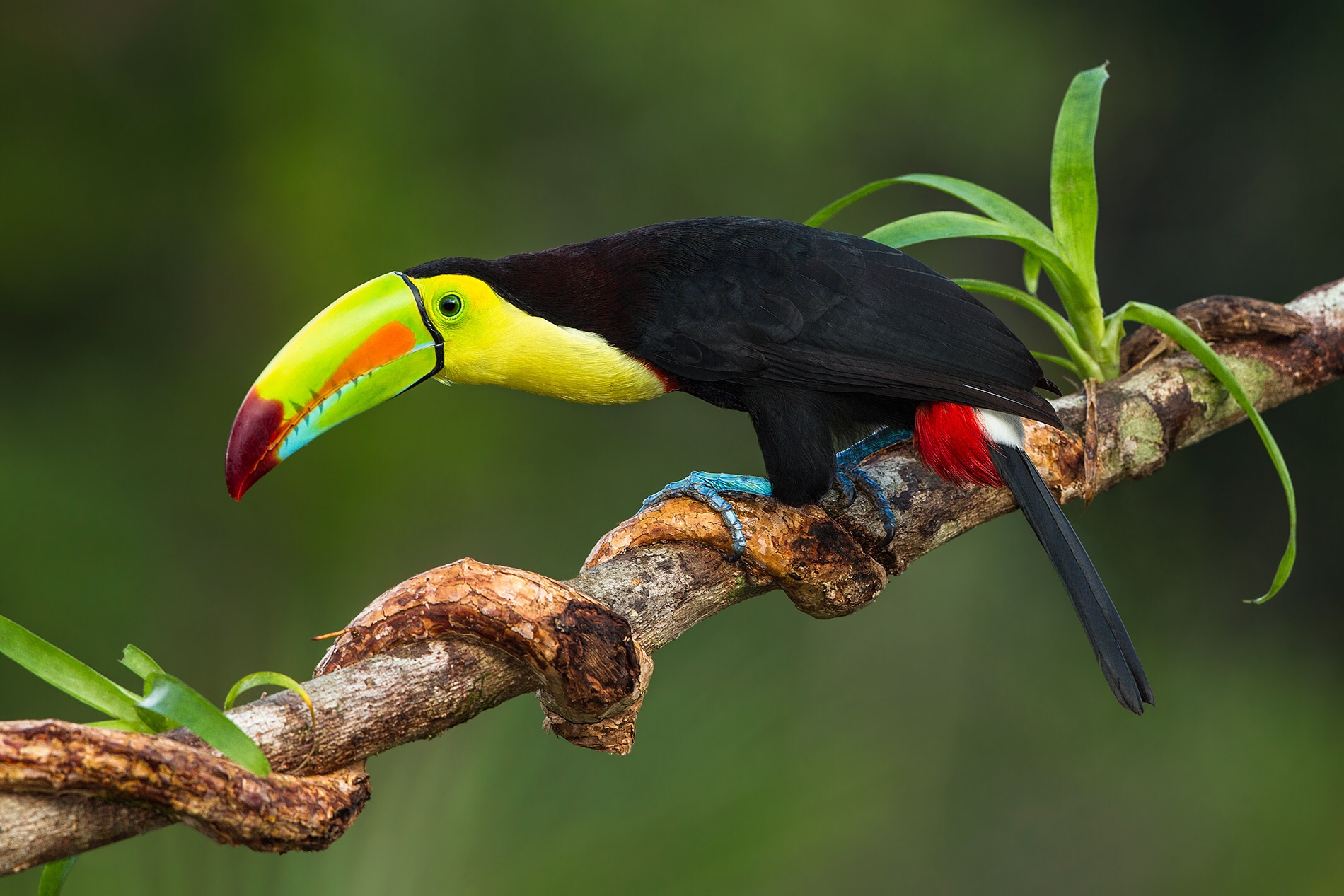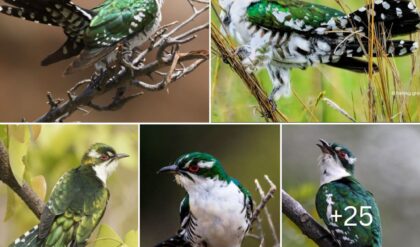Including its bill, the keel-billed toucan ranges in length from around 42 to 55 cm (17 to 22 in).Their large and colorful bill averages around 12–15 cm (4.7–5.9 in), about one-third of its length. It typically weighs about 380–500 g (13–18 oz). While the bill seems large and cumbersome, it is in fact a spongy, hollow bone covered in keratin, a very light and hard protein.

The plumage of the keel-billed toucan is mainly black with a yellow neck and chest. Molting occurs once per year. It has blue feet and red feathers at the tip of its tail. The bill is mainly green with a red tip and orange sides.

Keel-billed toucans have zygodactyl feet (or feet with toes 2 and 3 facing forwards, and toes 1 and 4 facing backward) – two toes face forward and two face back. Because toucans spend a large portion of time in the trees, this helps the birds to stay on the branches of the trees and jump from one branch to another.

Like many toucans, keel-billed toucans are very social birds, rarely seen alone. They fly in small flocks of approximately six to twelve individuals through lowland rainforests. Their flight is slow and undulating, consisting of rapid wing beats (six to ten), then a glide with the bird’s beak extending forward and dipping downward as though pulling the rest of the bird. Their feet are drawn up forward in flight. The flight distances are typically short. They live together in groups, often sharing cramped living quarters of holes in trees. There is a family structure within the group. Birds often “duel” with each other using their bills, and throw fruit into each other’s mouths. They ‘play ball’, one throwing a fruit in the air and a second seizing it.



